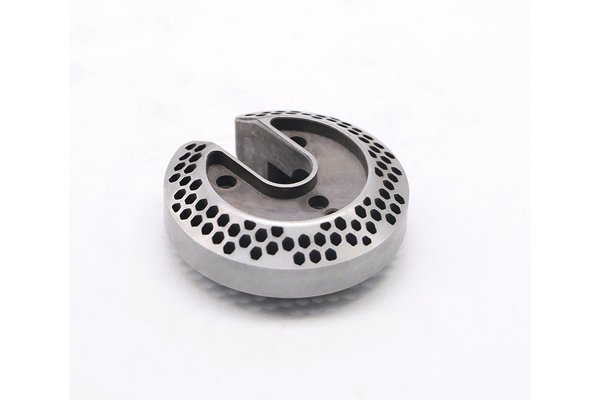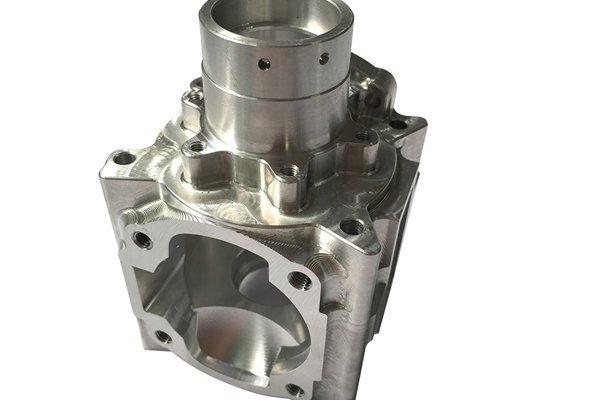Have you ever wondered how the shiny brass components of your gadgets and machinery are made? Or perhaps you’re curious about the hidden intricacies of CNC machining and why it’s hailed as a revolutionary method in manufacturing. Well, you’ve landed in the right place! In this comprehensive guide, we will delve deep into the fascinating world of CNC brass machining. Buckle up, because we’re about to embark on a riveting journey through techniques, benefits, applications, and much more!
Understanding CNC Brass: What Is It?
Let’s start at the very beginning. What exactly is CNC brass?
CNC stands for Computer Numerical Control—a technology that automates the control of machining tools via computer programming. Basically, it’s like having a very smart robot that can do all the heavy lifting for us. Brass, on the other hand, is an alloy made primarily of copper and zinc. It’s known for its golden appearance, excellent corrosion resistance, and superb machinability, making it a go-to choice for various applications.
When we combine the power of CNC machining with brass, we get a result that is not just efficient but also incredibly precise. Imagine being able to create intricate designs and complex shapes effortlessly! This is one reason why CNC brass components are used in everything from musical instruments to plumbing fittings and automotive parts.
Why Choose CNC Brass for Your Projects?
Superior Precision and Accuracy
One of the standout features of CNC machining, especially with brass, is its unparalleled precision. Traditional machining methods can often lead to human error—like that awkward moment when you cut something too short. But with CNC tech, every cut is programmed to be exactly the size and shape needed. It’s like having an expert craftsman who never gets tired or makes mistakes!
Excellent Machinability
Brass is known for being easy to work with. Compared to other metals, CNC machining brass allows for smoother operations. It can be cut easily without the risk of damaging the tools, which means that your production costs might drop significantly.
Aesthetic Appeal
Let’s face it: we all love shiny things. The bright, golden hue of brass makes it visually appealing, adding a touch of elegance to any final product. From stylish fixtures in luxury homes to polished automotive parts, CNC machined brass components can elevate the aesthetics of any design.
The CNC Brass Machining Process Explained
Now that we’ve established what CNC brass is and why it’s popular, let’s dive into the nuts and bolts of how the CNC brass machining process works.
Every great creation starts with a blueprint. This could be in the form of a Computer-Aided Design (CAD) file that outlines every detail of the component you wish to create. Designers use specialized software to draft the blueprint, ensuring all measurements are accurate.
Once the design is ready, it’s time to set the CNC machine. This involves loading the brass material into the machine and inputting the CNC programming code for the design. It’s a bit like programming your favorite playlist—once it’s set up, you can just sit back and let the magic happen!
Here’s where the fun really begins! The CNC machine uses various cutting tools to carve out the brass according to the design. Whether it’s drilling, milling, or turning, the CNC machine operates with precision, ensuring that each piece is crafted to perfection.
After the main machining process, the components undergo finishing touches. This might include polishing or applying protective coatings. Think of this stage as the final brush strokes on a masterpiece—it’s all about achieving that flawless finish.
Finally, no product is complete without a quality check. Each piece is inspected for any flaws or inconsistencies. Like a meticulous chef tasting their dish before serving, this step is crucial to ensure that every component measures up to high standards.
The Benefits of CNC Machining with Brass

Cost-Effectiveness
In a world where budgets matter, CNC machining with brass can be surprisingly cost-efficient. The initial investment in CNC technology can be offset by the decrease in labor costs and the reduced amount of waste material generated. You save money, and your product is environmentally friendly—talk about a win-win!
Versatility
CNC brass machining is incredibly versatile. Whether you need small, intricate parts or large components, CNC can handle it all. That’s like having a multi-tool: whether you need a screwdriver, can opener, or knife, it has you covered!
Quick Turnaround Times
With CNC machining, what used to take weeks can now be accomplished in days, if not hours! The automation of this process cuts down production time significantly. So if you’re in a hurry to get your products to market, the speed of CNC brass machining is not just a luxury—it’s a necessity.
Consistency and Reproducibility
One of the beauties of CNC technology is its ability to reproduce identical parts over and over again. If you need a thousand brass fittings for a plumbing job, rest assured that each piece will meet the same specifications and quality. It’s like baking a batch of cookies where each one is perfectly round and delicious!
Applications of CNC Brass
Now that we’ve covered the benefits and process of CNC brass machining, let’s chat about where you might see these fantastic components in action.
Automotive Industry
In the automotive world, precision is key. CNC brass components are widely used in automotive systems, such as in connectors, sensors, and valves. Given that even a tiny defect in a machined part can lead to significant safety issues, trust in CNC brass machining is stronger than ever.
Music Industry
Who would have thought that CNC machining plays a role in music? Brass instruments like trumpets, trombones, and saxophones often feature CNC machined components. These parts help create the beautiful sound quality musicians crave—proof that machining can contribute to artistry in unexpected ways!
Electronics and Electrical Components
CNC machined brass parts are commonly used in electronic devices. Connectors, housing, and conductive parts made from brass enhance performance and reliability. Imagine your favorite gadget—odds are, brass is playing a pivotal role inside!
Plumbing and HVAC Applications
Brass fittings and valves are staples in plumbing and HVAC systems due to their durability and corrosion resistance. Here, CNC brass components ensure long-lasting solutions, making them a favorite among contractors and builders alike.
The Future of CNC Brass Machining
As technology continues to evolve, so too will the methods and materials used in CNC machining. Advances in artificial intelligence (AI) and machine learning are expected to further optimize the CNC process. Imagine a machine that can learn and adapt to create even more complex designs—fascinating, right?
Moreover, as sustainability becomes a greater focus in manufacturing, we might see an increase in eco-friendly practices within CNC brass machining. Innovations such as using recyclical materials and energy-efficient processes may reshape the industry landscape.
Conclusion
There you have it—the ins and outs of CNC brass machining! From understanding what CNC brass is, to exploring the meticulous machining process, to examining its diverse applications, we’ve unraveled the fascinating world behind this manufacturing marvel.
So, the next time you marvel at the gleaming brass fittings or instruments, remember the story of the machines and the human ingenuity behind their creation. Whether you’re a hobbyist, manufacturer, or curious reader, the art of CNC brass machining is undoubtedly a realm worth exploring.
Now, armed with this knowledge, are you ready to dive deeper into the world of CNC brass, or perhaps even considering a project of your own? The possibilities are endless!




